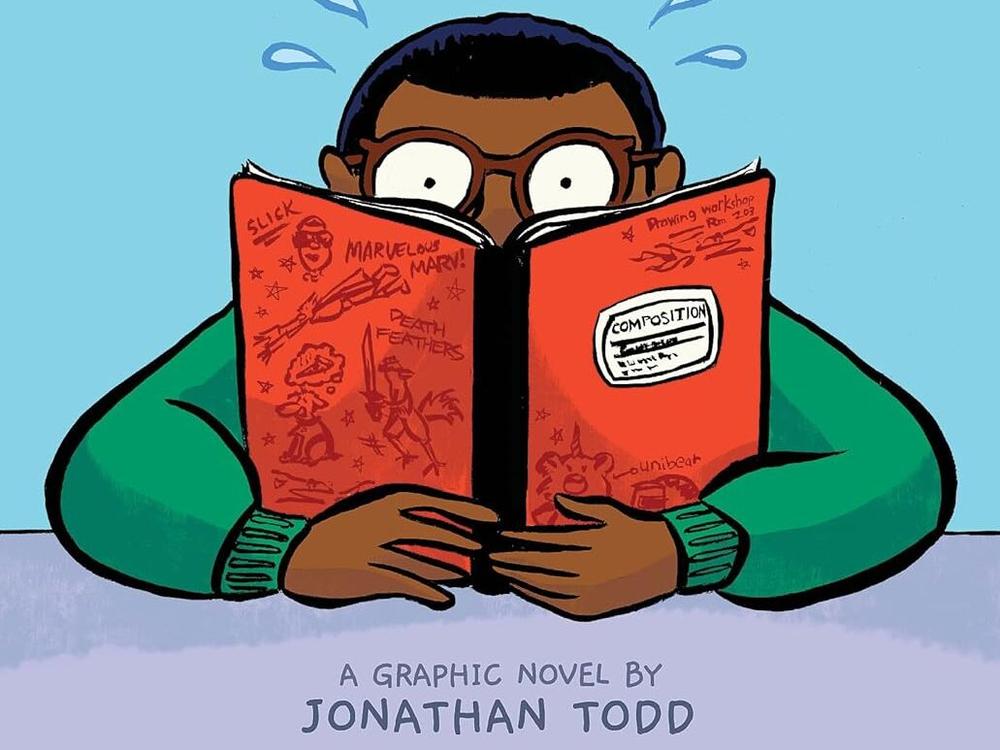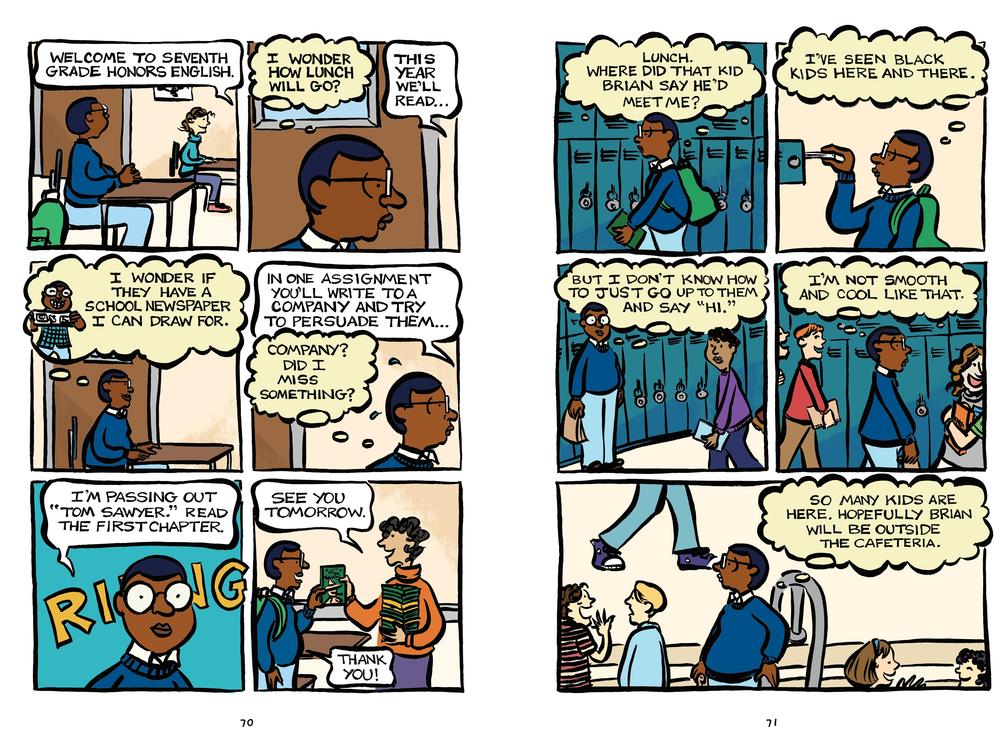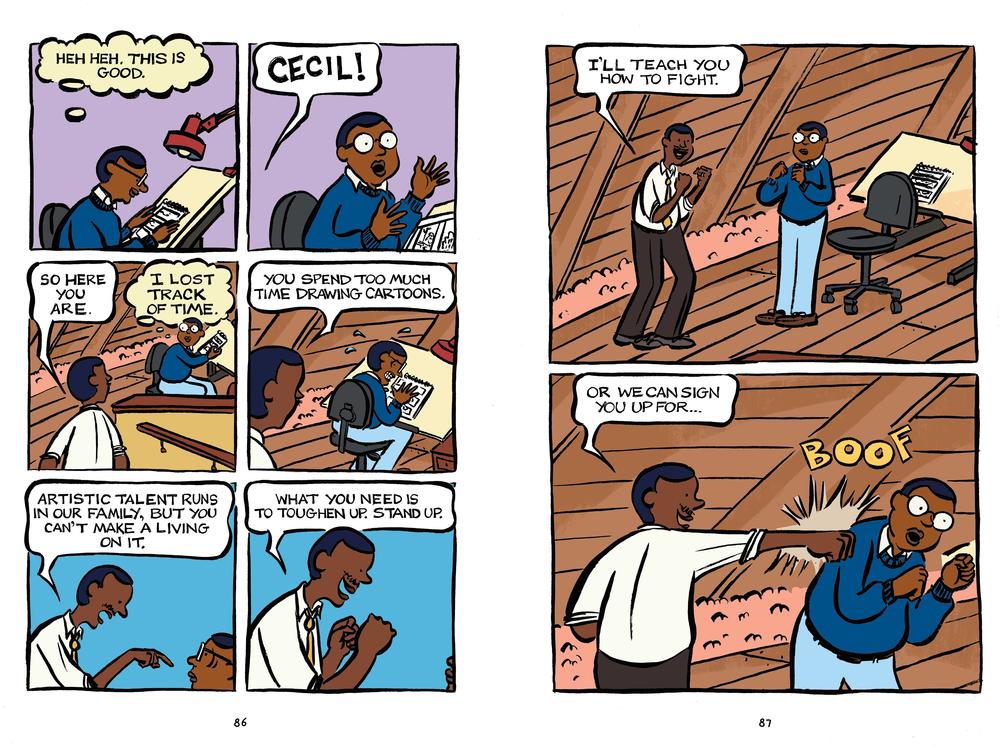Section Branding
Header Content
In 'Timid,' there is bravery under the surface
Primary Content
Many Americans assume that timidity -- or its close cousin, shyness -- is solely a negative trait. In our culture, calling an individual timid suggests that he is carrying anxiety, fear, and a lack of confidence. And while some of these associations might be accurate, we could also choose to see this attribute for its potential values. Timidity might go hand in hand with thoughtfulness, deliberateness, even a rich and full interior life.
Enter Jonathan Todd’s new middle-grade graphic novel, Timid. The bright cover on the book alludes to the potential for all these characteristics, from the bad to the good, captured in a single image. A Black tween sits behind an oversized red composition notebook with cartoon sketches splayed across its cover. He is wide-eyed, his oversized glasses poking out from behind the book. The rest of his face is almost completely obscured, as four giant sweat drops jump off his forehead. He is obviously anxious, clutching his book with two huddled arms. But what else is going on behind the surface?
Written and drawn by a longtime cartoonist and comics educator Jonathan Todd, who has dedicated the book to “anyone who has ever felt alone,” the semi-autobiographical Timid follows the boy on the cover, 12-year-old Cecil Hall. He is a 7th grader whose family moves from Florida, where they have been living for most of his life, to Massachusetts. From the beginning, it’s clear that Cecil knows exactly who he is and who he wants to be—a future famous cartoonist. But it’s not always easy for him to express or act on his desires. It’s also obvious that others around him, in part because he is so quiet, don’t always take his preferences into account.
Cecil’s father, who grew up in a public housing project, thinks his son needs to be tougher, because it was toughness that got him through his own childhood. His sister thinks he is not showing enough pride in his Blackness, and she advises him to befriend other Black children at his new school immediately.
Cecil knows that his family members are only looking out for him, but it’s his gentle, soft-spoken mother who makes him feel most relaxed. Though their relationship is often relegated to the sidelines, the few quiet scenes showing them alone together reflect a Cecil completely at ease. His mother knows how to let him simply be himself, and she trusts he will find his way on his own terms.
Meanwhile, at school, Cecil struggles to adjust, particularly in finding a friend group. He is confused by the difference in social make up from his previous school to this new one. Among other changes, what he notes almost immediately is how kids at Webber Middle School are a lot less integrated. This is problematic, for example, when he has to figure out which table to join for lunch—the Black children mainly sit at their own, separate table.
Organized into 14 chapters illustrated in deliciously bright colors, Timid’s offbeat, cartoony drawing style captures the powerful emotions that drive young people’s lives. Above all else, Cecil wants to be recognized, by his peers and the adults around him, as an artist—to carve out an identity for himself based on the activity that brings him the most joy and fulfillment. Though he may, at times, have difficulty asking for what he wants in a direct manner, he takes chances in his own way. After several false starts, he strikes up a friendship with Sean, another Black student. They share a love of storytelling and Star Trek. They enter, and come in second, in a comic contest.
On the outside, Cecil may seem overwhelmingly timid, but upon closer look it’s clear he is full of bravery. Sometimes bravery just materializes in disguise.
Tahneer Oksman is a writer, teacher, and scholar specializing in memoir as well as graphic novels and comics. She lives in Brooklyn, NY.



